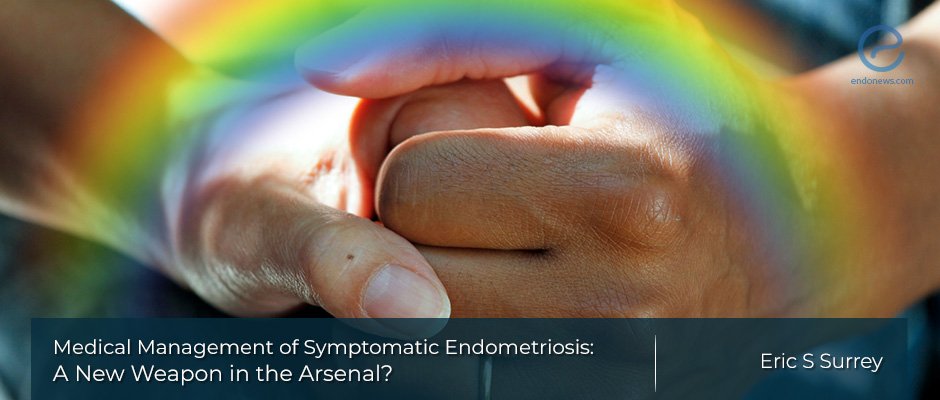A hope for postoperative symptomatic endometriosis therapy
Jun 22, 2020
Will the options for treating postoperative symptomatic endometriosis increase?
Key Points
Highlights:
- A new oral GnRH antagonist, if proven to be effective, may represent a second-line or postoperative therapy rather than a first-line therapy.
Importance:
- This study shows that total E2 suppression and achievement of amenorrhea are not necessary to achieve symptom relief in endometriosis patients, with the exception of those presenting with dyspareunia.
What’s done here?:
- The new therapeutic agents for symptomatic endometriosis patients, especially Linzagolix, are discussed.
Key Results:
- Elagolix, an oral GnRH antagonist, was the first drug to be approved for use.
- The half-life of Linzagolix (15–18 h) is longer than that of Elagolix.
- The dose and duration of the treatment with these drugs change according to the symptoms and findings of the endometriosis patients.
- The results of both the 52-week extension study, a well-designed phase 3 trial, and Food and Drug Administration approval are needed to use Linzagolix in the treatment of symptomatic endometriosis patients.
Limitations:
- Final conclusions for Linzagolix cannot be made since the study was a dose-ranging study rather than a definitive phase 3 trial.
- The study may not reflect the responses of people of all races.
- Almost 25% of the participants did not complete 24 weeks of therapy.
- Researchers did not perform between-dose comparisons regarding efficacy and side-effects.
- There is no information on clinical outcomes or side-effects in case of prolonged use beyond 24 weeks, nor is there any information available on the recurrence rates.
- The outcomes are not compared with other therapeutic drugs or surgical intervention.
- Handling the contraception and the impact of the methods to be used for this purpose are further important issues.
Lay Summary
A new chapter in the treatment of symptomatic endometriosis patients may begin since new medical approaches including oral GnRH antagonists, selective progesterone receptor modulators, aromatase inhibitors, and peritoneal immune response modulators are being actively evaluated. To date, there was only one oral GnRH antagonist that was approved for use in the United States, Canada, and Israel. However, there was a necessity for a dose and duration change based on the symptoms and findings of endometriosis patients.
Surrey SE., from Colorado Center for Reproductive Medicine, has written an article on the developments of medical treatment of symptomatic endometriosis patients.
A new oral GnRH antagonist is studied by Donnez et al. in the same patient population. The half-life of this drug (15–18 h) is longer than that of Elagolix.
It is again understood that total E2 suppression and achievement of amenorrhea is not necessary to achieve symptom relief in endometriosis patients, with the exception of those presenting with dyspareunia, based on the findings of the trials on oral GnRH antagonists.
Two separate doses of this new drug are being planned to be evaluated in phase 3 studies. Thus, individualized dosing of this agent may be used according to the specific patient needs and symptoms.
According to the author, to consider Linzagolix as a treatment option, the results of both the 52-week extension study, a well-designed phase 3 trial, and Food and Drug Administration approval are necessary.
Furthermore, the puzzle of handling the contraception and the impact of the methods to be used for this purpose that might have on the efficacy of the antagonist are important issues.
The author believes that this agent may be used as a second-line or postoperative therapy rather than first-line therapy. “Cost and efficacy analyses should be compared with other therapeutic agents”, he added.
This paper has recently been published in the journal Fertility and Sterility.
Research Source: https://pubmed.ncbi.nlm.nih.gov/32532487/
endometriosis endometriosis treatment GnRH antagonists go away first line therapy second line therapy spoonie dyspareunia endometriosis symptoms

